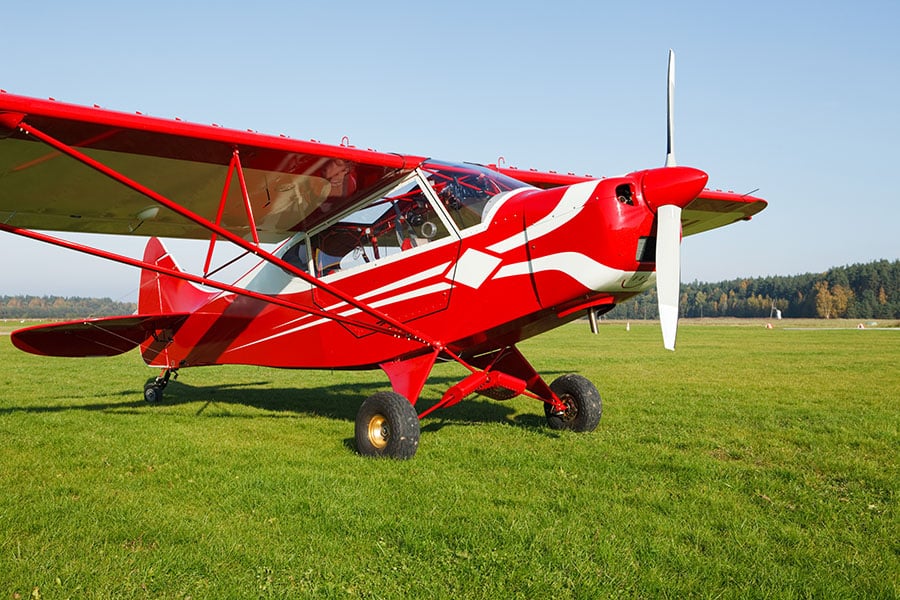While constructing a homemade private airstrip can be a dream of yours, most people don’t understand the associated costs. Traditional construction methods for grass airstrips specifically can run you over $100,000.
Our team believes a geocell foundation is a solid investment to begin building a private airstrip and save hundreds of thousands on lifelong maintenance.
Drainage Considerations Before Building a Grass Airstrip
Before you begin building a grass airstrip, drainage should be the utmost concern when reviewing the property. The steps you take for draining water off the landing strip now affect the airstrip 5, 10, and 20 years down the road.
Any pilot will tell you to pay special attention to drainage considerations and even bring experienced engineers into the picture. You’ll need to mitigate standing water on the private airstrip to ensure long-term landing success and for the property to last longer.
Soil samples
Even if you purchased a property with dozens of acres, the soil type may not support heavy rainfall or storms. This means that water is more likely to remain on the surface rather than recharge groundwater.
We recommend bringing soil test samples to a reliable engineer to see how you can fertilize the airstrip for proper drainage.
Drainage Ditches
Drainage ditches are another consideration you should keep in mind when constructing any private airstrip, particularly for grass airstrips. They offset any excess water, directing it away from the landing strip toward the side of the property.
You can increase the longevity of the property and prevent pooling, flooding, and standing water that deteriorates the ground over time.
Crowning the Airstrip
By shaving the grass airstrip’s grade, you can direct rainfall toward the sides instead of dealing with problems stemming from a flat runway. It’s common practice to even level the landing strip at a slight angle so water naturally flows from one side to the anger instead of getting stuck in the center.
Culverts & Pumps
Your private grass airstrip may still require additional support from culverts and pumps in cases where rain issues are super bad. Large pipage can be dug underneath the property at high-rain traffic spots to offload it somewhere else.
Ground Stabilization Considerations Before Building a Grass Airstrip
Similar to drainage considerations, ground stabilization issues go hand-in-hand since many stem from improper drainage efforts. You’ll run into these when first preparing the land and years down the road as animals and natural elements try to reshape the landing strip into an uneven surface.
Geocell: The Eco-friendly Airstrip Construction Alternative
For drainage and landing strip stability, geocell is the perfect foundation grid. You can build a private airstrip for cheaper by eliminating the need for expensive drainage systems and exchanging them for a dual-stabilization-drainage system.
And then the same panel system keeps maintenance costs at a minimum for the smartest overall investment for grass airstrip construction.
Remove Expensive Drainage Systems
Culverts, land crowning, and drainage ditches add up to making building a private airstrip an expensive endeavor. With natural perforation (holes), geocell allows water to pass through straight to groundwater level.
It’s a drainage solution tied straight to the base that helps weak soils perform better or remove unnecessary drainage options.
Stabilize the Ground for Private Airplanes
You may have already heard that grass private airstrips can be more challenging to fly on than paved surfaces. The landing strip landscape can change every time you use it, from rodent tunnels to unexpected potholes.
By locking the ground into its honeycomb surface, geocell is a fantastic deterrent from an uneven landing strip. The aircraft’s weight disperses across the entire base rather than one place to protect the ground surface and increase its load support.
Reduce Lifelong Airstrip Maintenance
The most expensive part about building a private airstrip is the time and money it requires to care for it. Most aircraft owners spend more during their lifetime fixing potholes, ruts, pooling, and other problems than they did for preparing the land in the first place.
Geocell not only mitigates drainage and ground stabilization issues the first time but also upkeeps them as long as the product is installed. You’ll deal with less grass airstrip maintenance and not worry about as many headaches as other aircraft owners do.
Build a Lifelong Private Airstrip
With a geocell foundation, you can construct a longer-lasting grass landing strip at an affordable price. We believe it is the solution to dealing with constant maintenance issues with drainage and ground stabilization that many pilots complain about.
Our BaseCore engineers understand the implications of poor soil, sloped acreage, and other factors that contribute to building a private airstrip. When you receive a free project evaluation, we can hear about the specific project details and provide an accurate quote that reflects the property.
If you want to learn more about geocell and how it can support your future private airstrip, call us today at (888)-511-1553.
